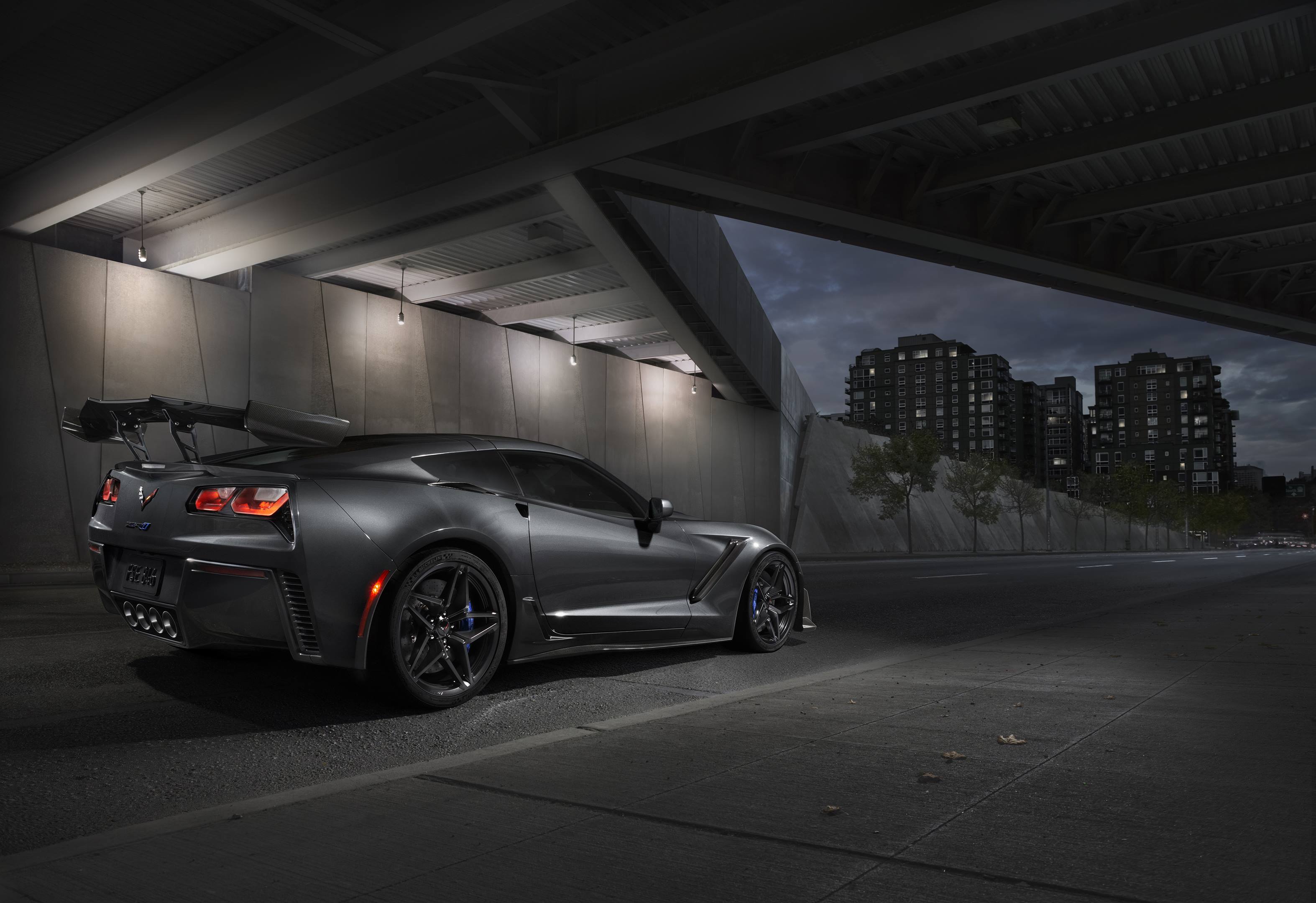The new Corvette ZR1 scrapes the limits of front-engine, rear-drive
Just when we thought the raucous Z06 was the last word in front-engine, rear-drive performance, it seems Chevrolet has one last ace in the hole. The hallowed ZR1 is back, baby.
Picking up where the Z06 left off, the ZR1 cranks things up more than a little. More power, more torque, more cooling. More grip, more downforce. Top speed is higher. Lap times will be quicker. As Corvette engineer Tadge Juechter tells Car and Driver, it is “the most we know how to do.”
The process starts with the Z06’s 6.2-liter supercharged LT4 V-8 engine, albeit with a 52-percent bigger supercharger, port and direct fuel-injection, upgraded crankshaft, and larger throttle bodies. Although the engine once again adopts the LT5 nomenclature familiar from the 1990–95 C4-generation Corvette ZR-1, it is neither designed by Lotus nor does it use dual-overhead cams. It does, however, make 755 horsepower—more than twice the 375 hp the C4 ZR-1 made in 1990. Torque is rated at a shocking 715 lb-ft, and Chevy claims a top speed of over 210 mph.




As for the other changes, they’re mostly in front of the windshield. There’s an all-new front fascia for better airflow and cooling. Chevy essentially turned the ZR1 into a shaker: The carbon-fiber supercharger cover is separate from the carbon-fiber hood.
The front splitter is new (it’s also carbon fiber), there’s a “front underwing” for improved downforce, and the front fenders are wider to accommodate the wider front tires. Out back, you’ll notice a runway-sizes wing on downforce duty. There is a standard low wing and an optional High Wing as part of the ZTK performance package, with which the ZR1 produces as much as 950 pounds of downforce. The standard ZR1 makes, Chevy says, 70 percent more downforce than the base Z06, but the ZTK-equipped model makes 70 percent more downforce than the Z06 with the Z07 aero package.
This isn’t cooking with gas. It’s cooking with a cruise missile.

Given it is likely the ultimate example of the traditional front-engine, rear-wheel-drive Corvette layout, the ZR1 does have some potential for collectability. History isn’t totally on its side, however. The ZR1 of 1970-72 was an option package and so rare it defies comparison to higher-volume models. Both the C4 ZR-1 and the later C6 ZR1 have yet to find traction, value-wise in the collector market. The 1990 ZR-1 cost a whopping $58,995, and even concours-level examples today fetch—at most—$52,200 for rare 1995 examples (according to the Hagerty Valuation tool). As for the C6 ZR1, its short time in the collector market has been more prosperous; it stickered at $103,300 when new in 2009 and now concours-level examples are trading at about $107,500. The overall average Hagerty quoted price is about $71,000, according to the Hagerty Valuation team.
If it seems like Chevy is dropping the proverbial mic with this angry-looking, kitted-out Corvette, it’s because soon even this monstrous ZR1 will be a relic of history. With the arrival of the C8-generation mid-engine Corvette, Chevy will be completely ditching the playbook it’s used since 1953. And although this ZR1 very much follows the all-out formula of the 638-hp C6-gen ZR1, with its supercharged LS9 and extensive use of carbon fiber, it’s still part of the same lineage any Corvette fan can recognize. And here too is a possible missed opportunity for some evolution in the front-engined Corvette. Chevy could have introduced a DOHC engine or some exotic construction materials such as a carbon fiber subframe, although both are probably on the expensive side of the cost-benefit ratio.
Enjoy it, America, while it lasts. Because while this sensational, over-the-top ZR1 seeks to be the “King of the Hill,” like its predecessors, soon there will be another hill to conquer entirely—one with the engine behind the seats.
20171114201044)





